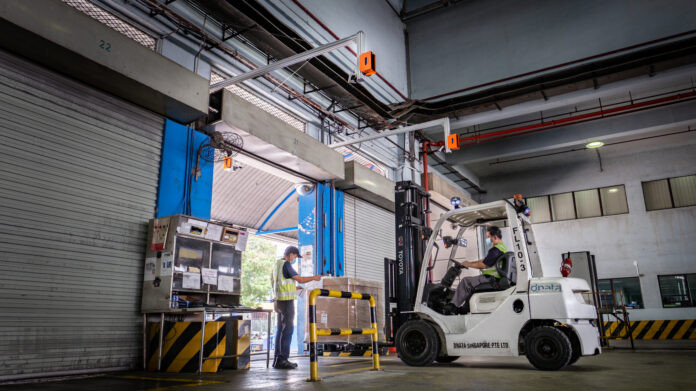

Singapore is looking to continue its post-pandemic rebound, with major carriers such as AFKLM Cargo, China Airlines, Emirates, Hong Kong Air Cargo, Turkish Airlines and UPS all present at the hub.
To keep pace with growing demands, dnata is making substantial investments in its facilities, currently equipped to handle 550,000 tonnes per year. The cargo terminal looks to utilise the most contemporary technology to enhance the handling of everything from perishables to high-value cargo.
“You can’t just have facilities and stay stagnant, you’ve got to keep adding to them,” Sam Gould, Head of Cargo for Dnata Singapore, said. “Training and investment go into our operations to make sure that we continue to be on the cutting edge of delivering what people expect from time and temperature sensitive material.”
READ: Navigating the future of global logistics from Dubai
Singapore set-up
The innovative landscape at Changi, supported by the airport authority, civil aviation officials and government bodies, has created an environment where companies, like dnata, can explore the implementation of pioneering technology.
“There’s so much support around innovation,” Gould explained. “If we’re introducing a new product or service or building a technological innovation with a partner, there is support. Innovation is really a community effort.
“We are proud to be the pioneers of the digitalisation of cargo processes, following an agile approach to building systems capability and creating value for our customers and partners.”
Speedcargo serves as an illustration of the collaborative innovation facilitated at the terminal. Its AI-driven solutions, Cargo Eye and Assemble, have been seamlessly integrated, enhancing overall logistical efficiency, digitisation, and cargo capacity.
“As operational space sometimes becomes limited, we need to ensure we can keep doing what we’re doing and have sufficient room for growth, we have to look into our digitalisation efforts,” Gould continued.
“We have to make sure we make the most of every square foot in our facility and automating certain functions allows us to get more throughput in the same area, so that’s really what we’re focusing on now.”
READ: Redefining air cargo with innovation and sustainability
Going green
In a changing landscape where environmental responsibility is paramount, dnata has committed to moving towards more sustainable operations.
“We’re having to show our green credentials and make investments in those areas, solar panels, electric vehicles, etc” Gould stated. “It’s really become a hot topic for us when we talk to the industry.”
dnata installed a 3.5 megawatt-peak rooftop solar power system at its catering and cargo buildings at Singapore Changi Airport. This generates over 4,300 megawatt hours of green power per year, cutting electricity-related carbon emissions by 20%. The company also replaced a number of ground support equipment (GSE) and forklifts with hybrid or electric alternatives, while refurbishing selected GSE where appropriate.
“We’re also implementing comprehensive waste reduction strategies, minimising single-use plastics and recycling materials wherever possible across the operations,” Gould said. “Our latest initiative focuses on recycling plastic sheets used in cargo handling – a crucial step in reducing plastic waste and promoting responsible resource management.”
The cargo handler has also implemented Cooling as a Service (CaaS) in its Singapore base to provide chilled water and air conditioning in a sustainable manner. This new system will save 650 metric tonnes of carbon and 1.5 million kilowatt hours of electricity per year. Overall, the new system will cut energy consumption by 54% at the cargo facility and 25% in its catering and support offices.
“dnata is constantly evaluating its processes, technology, and practices to identify new ways to enhance sustainability,” Gould concludes. “Every small change makes a big impact.”










